Abstract
The aim of the study was to investigate the possible acute effects of exposure to electric and magnetic fields. Twenty six experienced linesmen, aged 25 to 52, were studied during two working days while performing a simulated routine inspection of insulators on steel poles of a 400 kV power line. During one of the working days the inspection was performed on a power line in operation and on the other day the same procedure was performed on an identical power line, which was not in operation. The two days were found to be comparable with regard to the physical workload which, on the basis of heart rate measurements, was estimated to be high. Exposure to the electric and magnetic fields was measured using a device designed for on-worker sampling on each linesman. The mean exposure for the working day was estimated to be 2.8 kV/m (SD = 0.35) and 23.3 microT (SD = 4.2). The possible effects of exposure were studied using a battery of four automated performance tests, EEG, a mood scale, and a questionnaire to assess subjective symptoms. All workers were examined immediately before and after each workday. Furthermore, blood samples were collected for each subject on three different occasions during each workday. The battery of behavioural tests comprised a test of simple reaction time, a vigilance test, a test of short term memory (digit span), and a perceptual test (symbol digit). The four EEG recordings for each worker were judged blindly and sorted with regard to amount and stability of alpha activity. The blood samples were used for an analysis of possible changes during the workday with regard to the following hormones: thyroid stimulated hormone, luteinising hormone, follicle stimulating hormone, prolactin, cortisol, testosterone, and neopterin. Detailed analyses of the results using both parametric and nonparametric tests showed no statistically significant difference between the two conditions which could be attributed to exposure to electric and magnetic fields.
Full text
PDF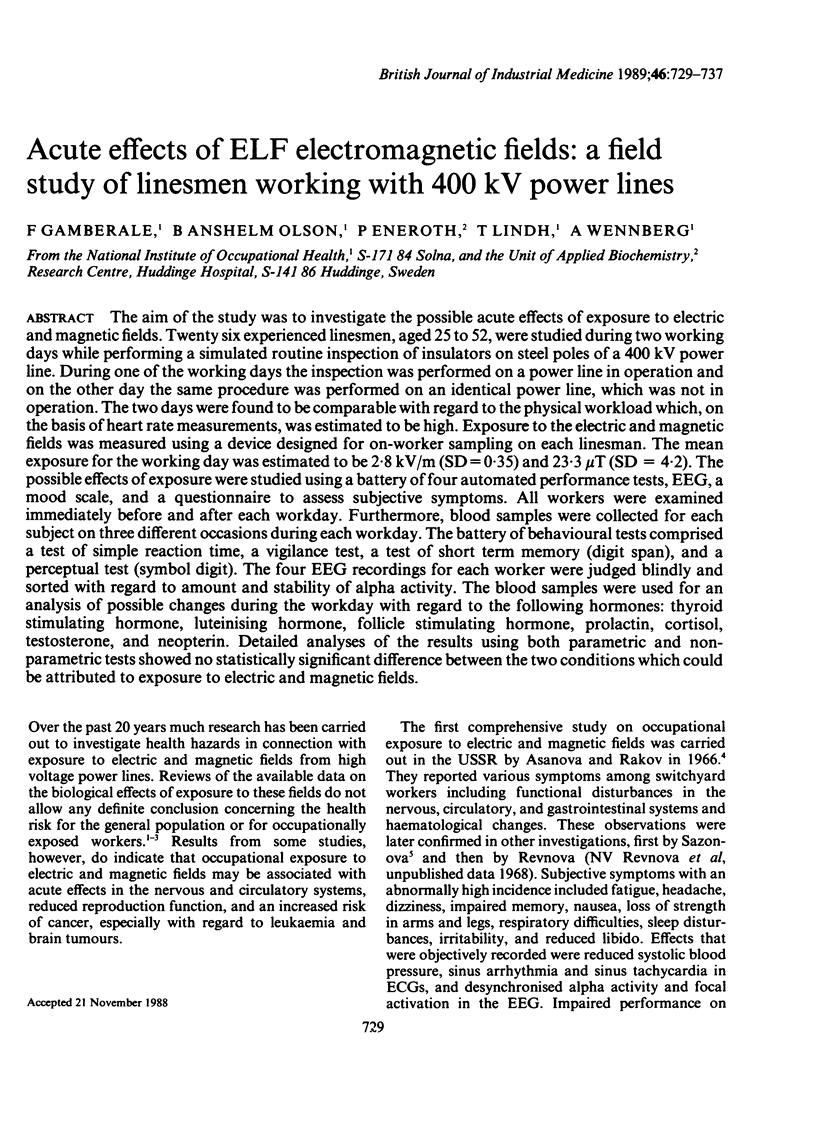
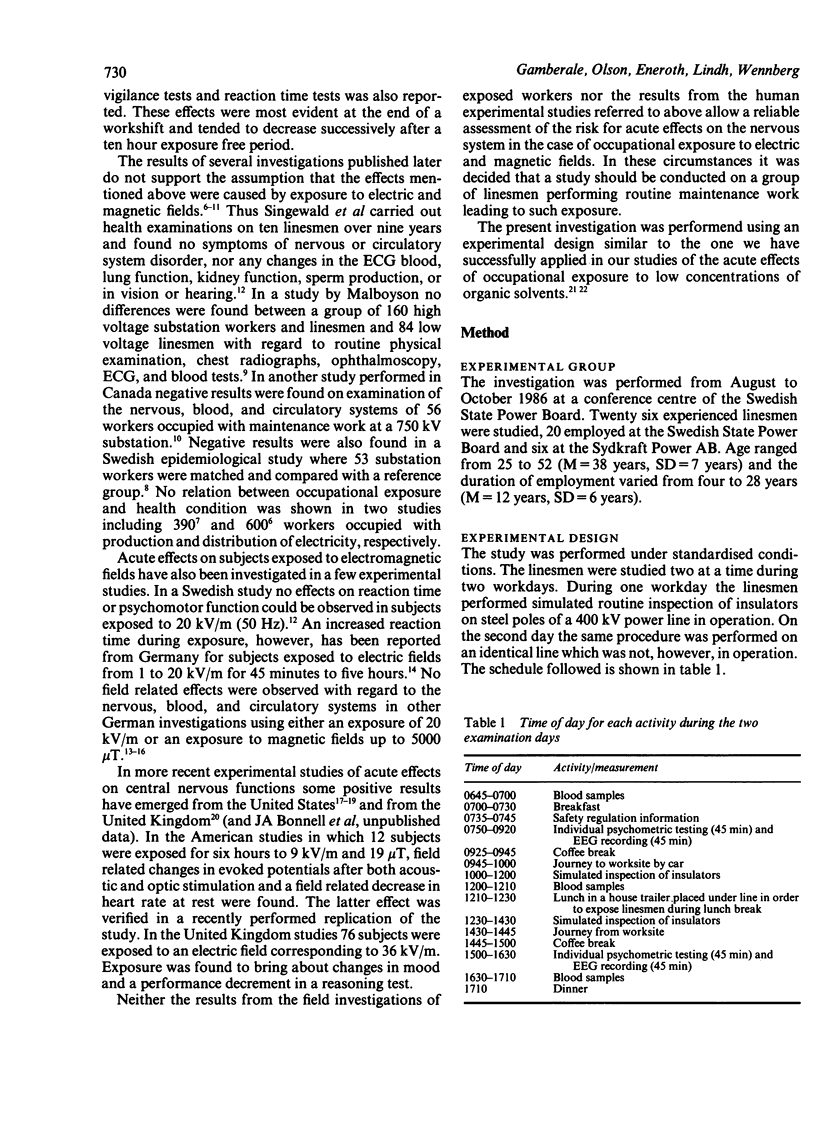
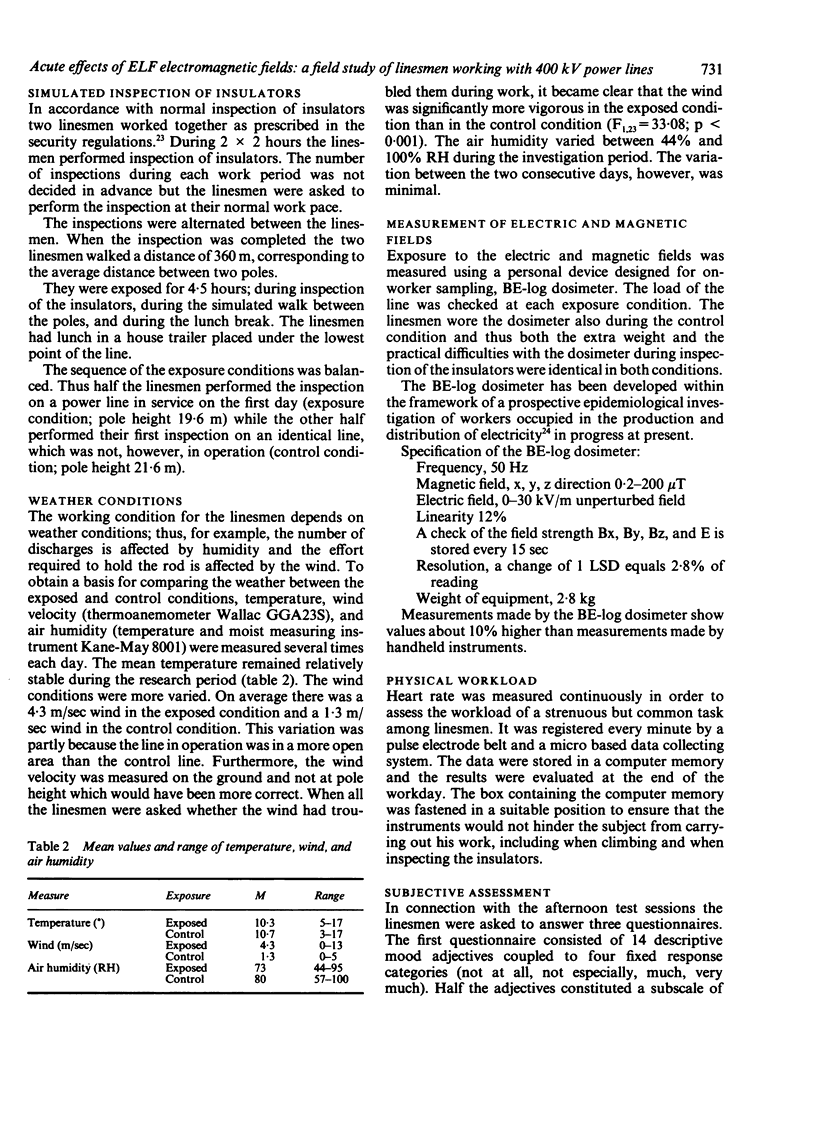
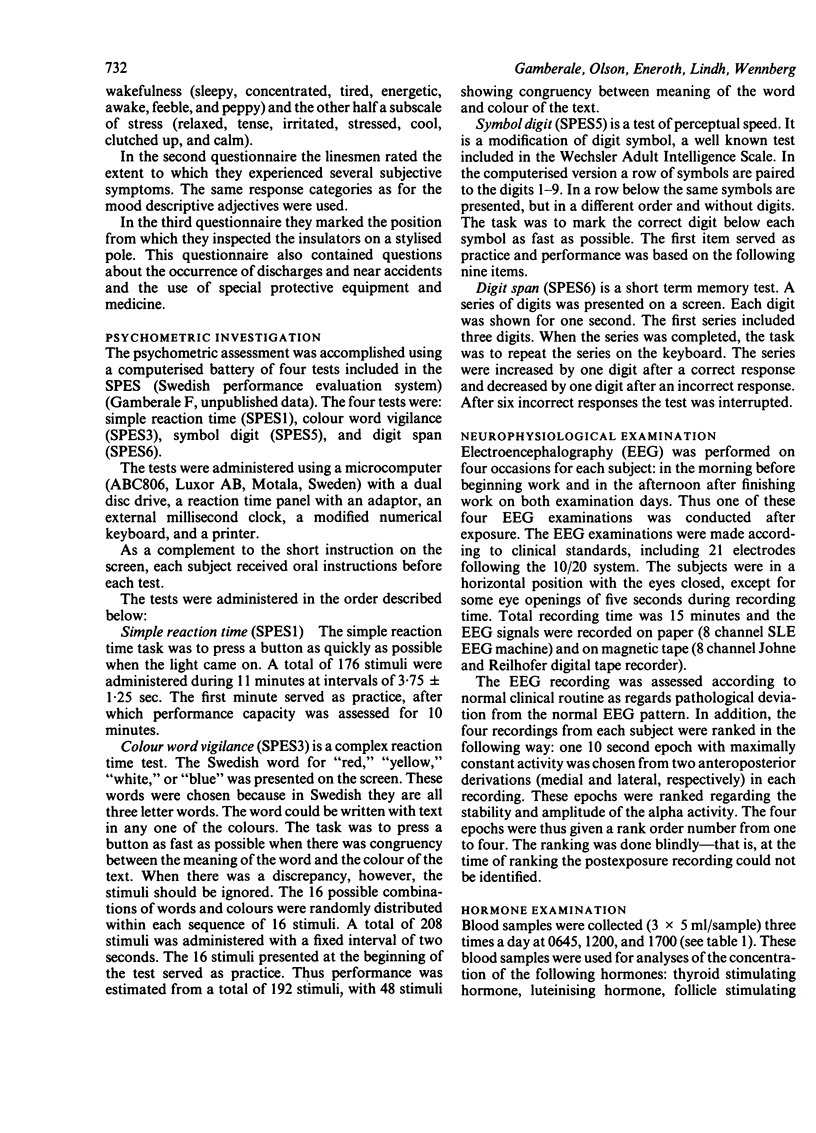
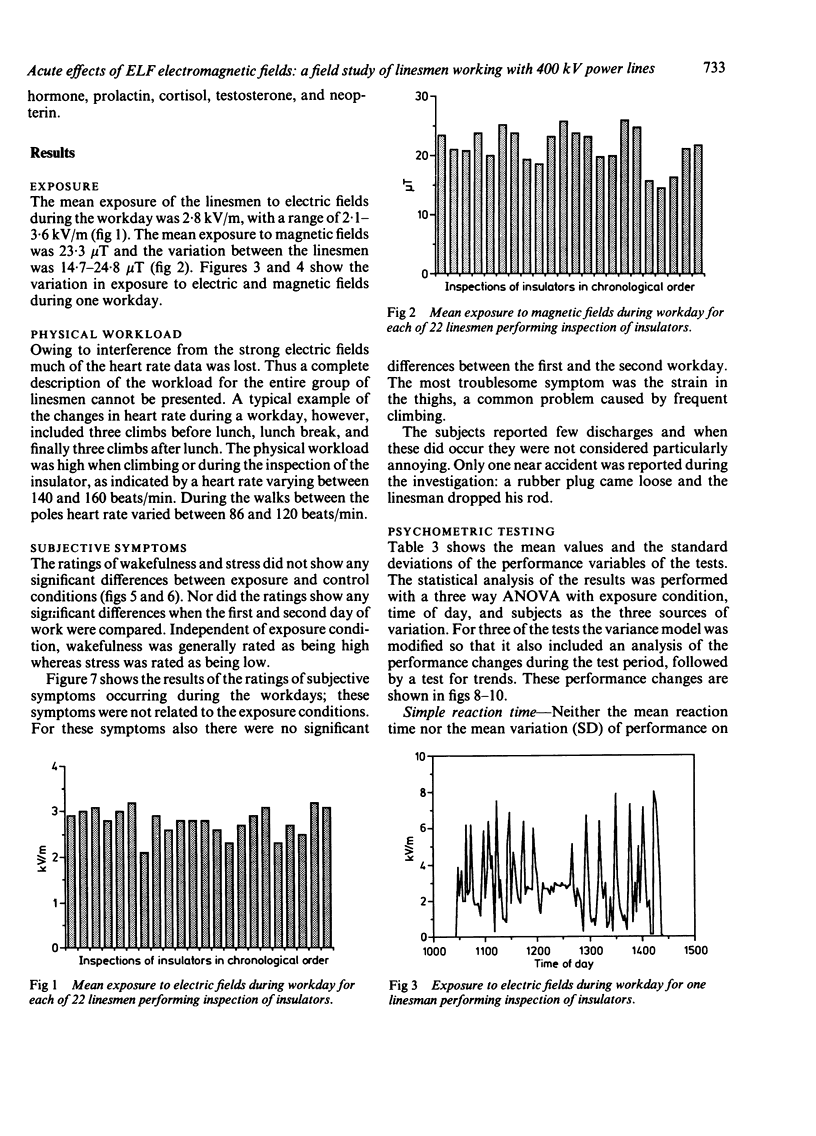
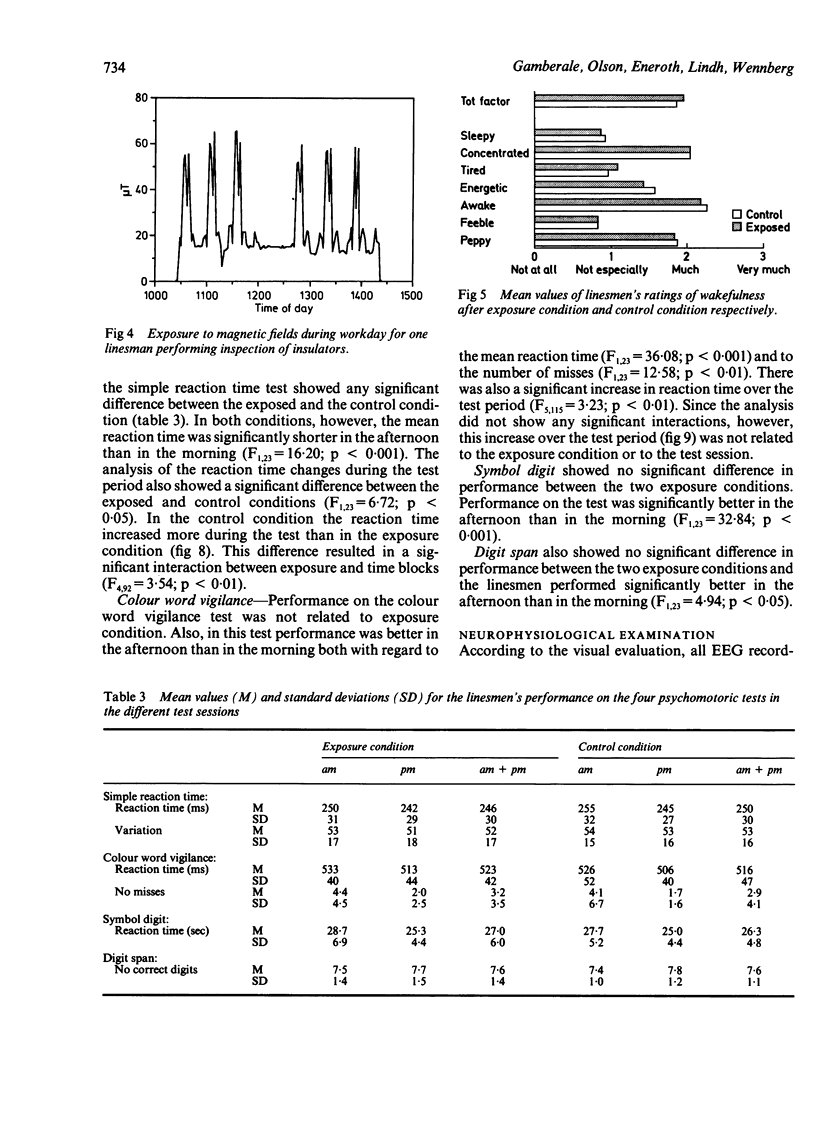
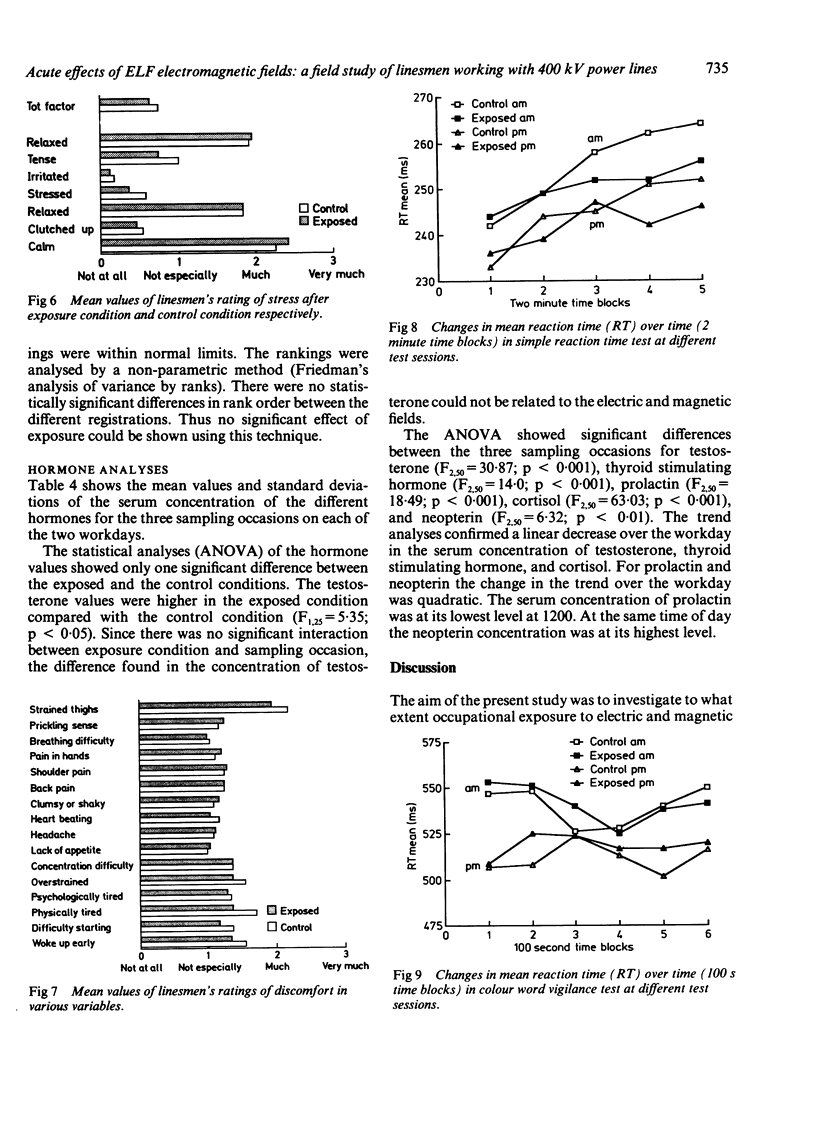
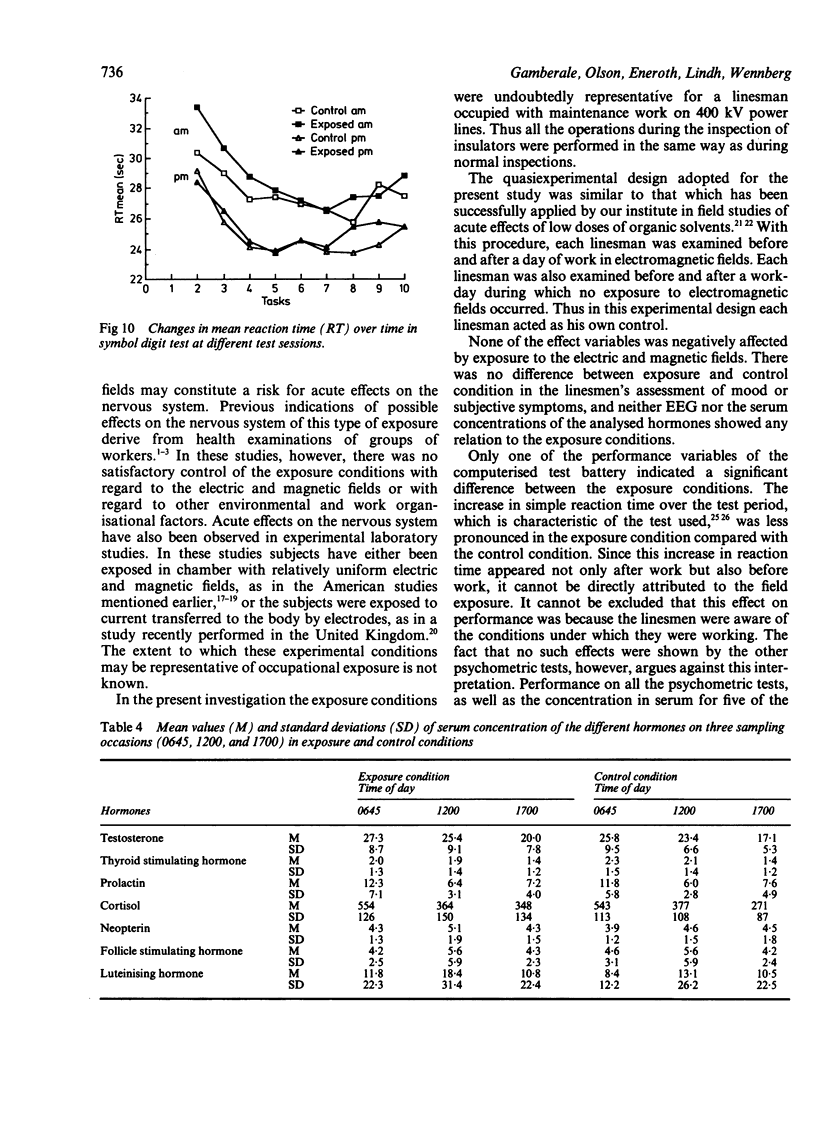
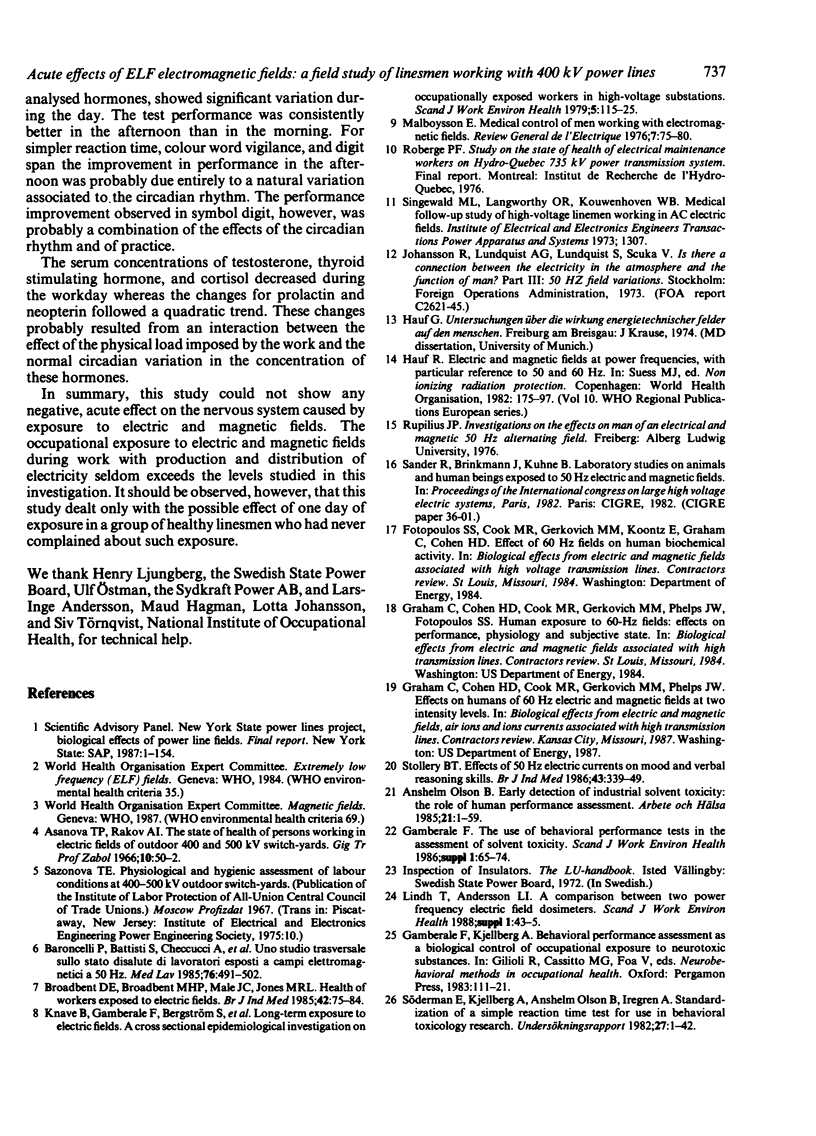
Selected References
These references are in PubMed. This may not be the complete list of references from this article.
- Asanova T. P., Rakov A. N. Sostoianie zdorov'ia rabotaiushchikh v élektricheskom pole otkrytykh raspredelitel'nykh ustroistv 400-500kv. (Predvaritel'noe soobshchenie) Gig Tr Prof Zabol. 1966 May;10(5):50–52. [PubMed] [Google Scholar]
- Baroncelli P., Battisti S., Checcucci A., Comba P., Grandolfo M., Serio A., Vecchia P. Uno studio trasversale sullo stato di salute di lavoratori esposti a campi elettromagnetici a 50 Hz. Med Lav. 1985 Nov-Dec;76(6):491–502. [PubMed] [Google Scholar]
- Broadbent D. E., Broadbent M. H., Male J. C., Jones M. R. Health of workers exposed to electric fields. Br J Ind Med. 1985 Feb;42(2):75–84. doi: 10.1136/oem.42.2.75. [DOI] [PMC free article] [PubMed] [Google Scholar]
- Gamberale F. Use of behavioral performance tests in the assessment of solvent toxicity. Scand J Work Environ Health. 1985;11 (Suppl 1):65–74. [PubMed] [Google Scholar]
- Knave B., Gamberale F., Bergström S., Birke E., Iregren A., Kolmodin-Hedman B., Wennberg A. Long-term exposure to electric fields. A cross-sectional epidemiologic investigation of occupationally exposed workers in high-voltage substations. Scand J Work Environ Health. 1979 Jun;5(2):115–125. doi: 10.5271/sjweh.2661. [DOI] [PubMed] [Google Scholar]
- Stollery B. T. Effects of 50 Hz electric currents on mood and verbal reasoning skills. Br J Ind Med. 1986 May;43(5):339–349. doi: 10.1136/oem.43.5.339. [DOI] [PMC free article] [PubMed] [Google Scholar]


